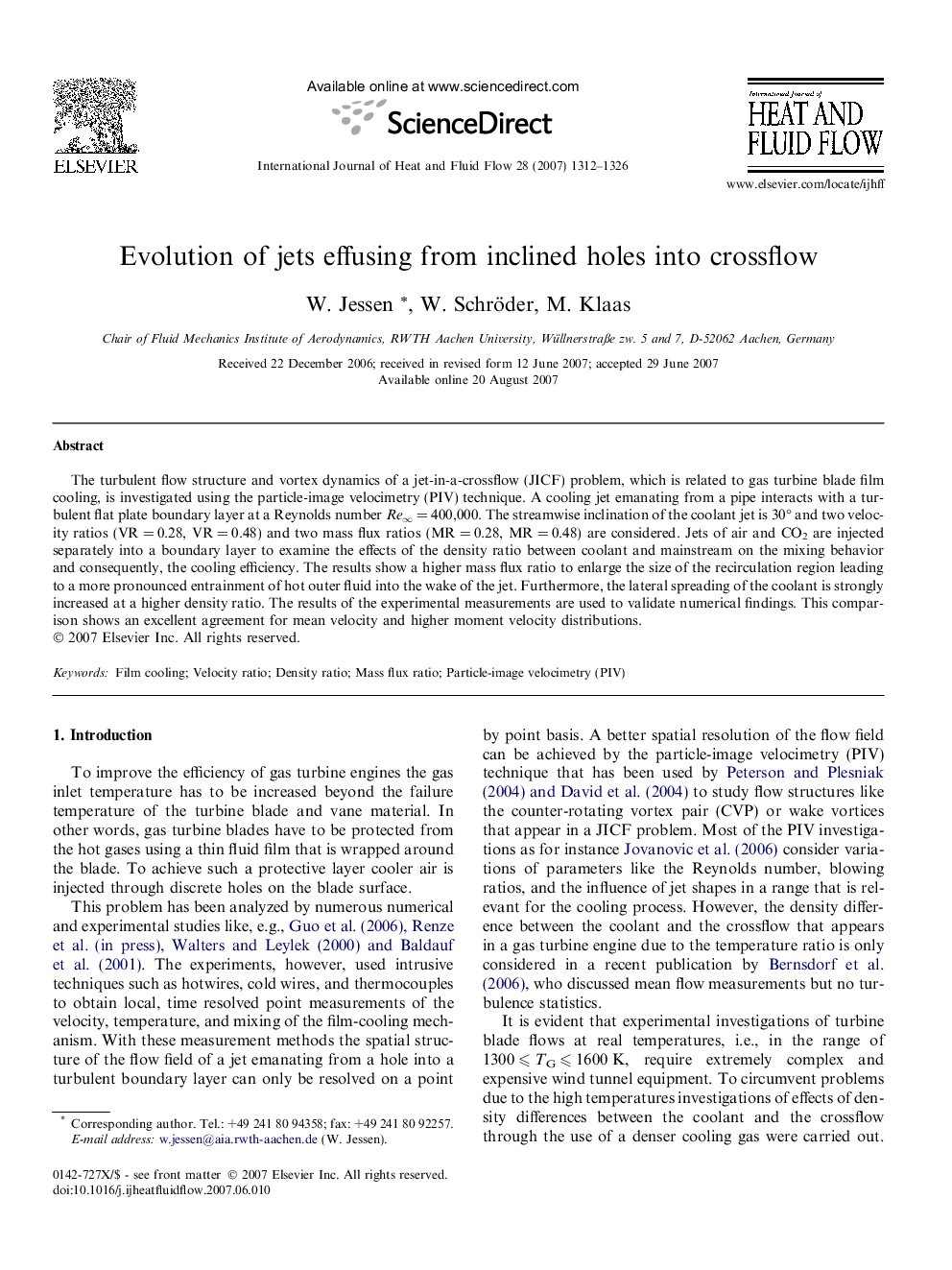| Article ID | Journal | Published Year | Pages | File Type |
|---|---|---|---|---|
| 656153 | International Journal of Heat and Fluid Flow | 2007 | 15 Pages |
Abstract
The turbulent flow structure and vortex dynamics of a jet-in-a-crossflow (JICF) problem, which is related to gas turbine blade film cooling, is investigated using the particle-image velocimetry (PIV) technique. A cooling jet emanating from a pipe interacts with a turbulent flat plate boundary layer at a Reynolds number Reâ = 400,000. The streamwise inclination of the coolant jet is 30° and two velocity ratios (VR = 0.28, VR = 0.48) and two mass flux ratios (MR = 0.28, MR = 0.48) are considered. Jets of air and CO2 are injected separately into a boundary layer to examine the effects of the density ratio between coolant and mainstream on the mixing behavior and consequently, the cooling efficiency. The results show a higher mass flux ratio to enlarge the size of the recirculation region leading to a more pronounced entrainment of hot outer fluid into the wake of the jet. Furthermore, the lateral spreading of the coolant is strongly increased at a higher density ratio. The results of the experimental measurements are used to validate numerical findings. This comparison shows an excellent agreement for mean velocity and higher moment velocity distributions.
Related Topics
Physical Sciences and Engineering
Chemical Engineering
Fluid Flow and Transfer Processes
Authors
W. Jessen, W. Schröder, M. Klaas,
